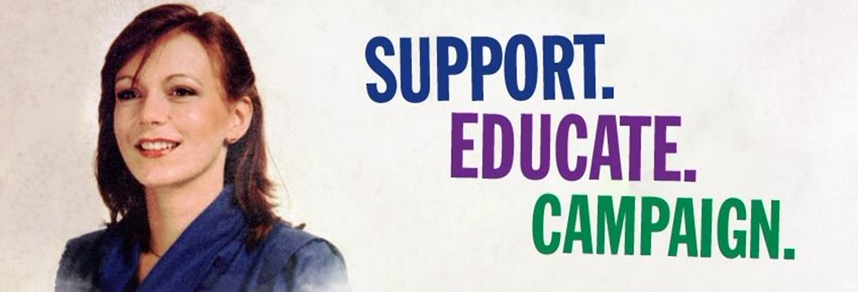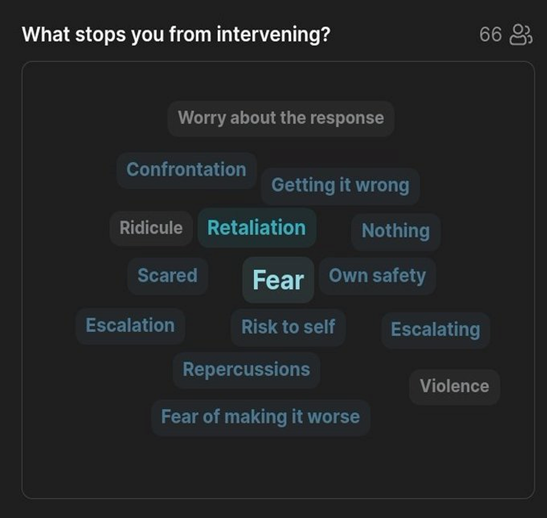
Suzy Lamplugh Trust is the UK’s leading personal safety charity. As well as offering training and consultancy services, they also manage the National Stalking Headline.
Suzy Lamplugh Trust gave the keynote speech at the 2022 Ann Craft Trust Safeguarding Adults Conference. They delivered their Stand Up Against Harassment interactive workshop developed by Right To Be and in partnership with L’Oreal Paris, sharing some safe and practical ways we can intervene in cases of street harassment. The workshop also offered advice to how we can stay strong and resilient should we ever ourselves be victims of street harassment.
This post is a brief introduction to the charity, and a short summary of the key lessons from their workshop. For more information about Suzy Lamplugh Trust and their work, head to their website.
Who Was Suzy Lamplugh?
Suzy Lamplugh was an estate agent and lone worker—that is, someone Works without direct or close supervision, as per HSE’s definition.
In 1986, Suzy went to meet a client, and disappeared. She was just 25 at the time. Seven years later, having never been found, she was declared deceased.
It is widely believed that Suzy may have been targeted by a stalker, and the evidence seems to suggest this.
Suzy Lamplugh Trust exists “so that what happened to Suzy does not happen to anyone else.” Their aim is to reduce the risk of abuse, aggression and violence through empowering people to take steps to avoid, mitigate, or manage risks across all aspects of their life.
What is street harassment?
Suzy Lamplugh Trust’s keynote at The Ann Craft Trust 2022 Safeguarding Adults Conference focused on street harassment.
Street harassment is a broad term that may refer to a number of offensive actions in public areas, including:
- Unwanted comments, often of an insulting or sexualised nature.
- Provocative gestures, including wolf-whistling and indecent exposure.
- Touching, groping, and other sexual advances.
In December 2022, the government announced their plans to make street harassment a crime, with jail sentences of up to two years.
Yet as with all safeguarding issues, we all have a part to play in keeping ourselves, and others, safe.
And when it comes to street harassment, one of the biggest barriers to successful safeguarding is the bystander effect.
What is the Bystander Effect?
If you saw someone getting abused or harassed in public, would you intervene?
Many would not. They’d instead walk on, or look the other way, or otherwise remain quiet.
This is the bystander effect. It means that instead of taking action, you instead choose to be a bystander.
There are many reasons why people might choose not to intervene in a situation:
- “I’m scared it will turn on me.”
- “It’s not my problem.”
- “I’m afraid I’ll make things worse.”
- “I don’t fully understand what’s going on.”
- “I can’t make a difference.”
During their workshop, Suzy Lamplugh Trust asked participants to list the reasons why they may choose not to intervene in a situation. These were some of the responses:

These are all very common, and perfectly understandable responses to stressful and unpredictable situations. But as Suzy Lamplugh Trust demonstrated in their keynote speech, there are a few ways that anyone can safely and effectively intervene in cases of street harassment.
This is bystander intervention—the opposite of the bystander effect. It means that, when something bad happens, we stand up for each other. We look out for people and do whatever we can to help.
The Five Ds
Intervention takes courage. But it’s not necessarily a case of directly confronting the harasser. Indeed, direct intervention is not always the right approach.
In cases of street harassment, even the smallest action can discourage the harasser from continuing while reducing the trauma the victim may feel afterwards.
Suzy Lamplugh Trust champions the 5 Ds of Intervention:
- Distract
- Delegate
- Document
- Delay
- Direct
Distract
Find a way to draw the harasser’s attention away from their victim.
Delegate
Ask someone else for help. Ideally, this will be someone with the power to take direct action, such as a bus driver or a ticket collector.
Document
Take out your phone and film or photograph the situation.
Delay
Some may not wish to intervene while the harassment’s taking place. But you could delay your intervention, offering your support when you feel it’s safe to do so.
Direct
Set an immediate boundary with the harasser, before offering the victim your support.
What To Do If You’re A Victim of Street Harassment
The important thing to remember is that it is never your fault.
Your actions might not prevent street harassment from happening. But how you respond to the situation might make a difference.
Yet it’s not your responsibility to have the perfect response. It’s the harasser’s responsibility to not abuse you in the first place.
However, you respond, do it for you. Do whatever it takes to keep up your resilience, even if this means you don’t take any immediate action.
The Suzy Lamplugh Trust, sponsored by L’Oreal Paris and with Right To Be, are delivering free one hour Stand Up Against Harassment bystander training sessions throughout 2023. Find out more and book your free place here.
You’ll find lots of resources on the Right to Be website for victims of street harassment, including lots of advice on how you can feel empowered and resilient.
You’ll also find lots of personal safety advice on Suzy Lamplugh Trust’s website.
